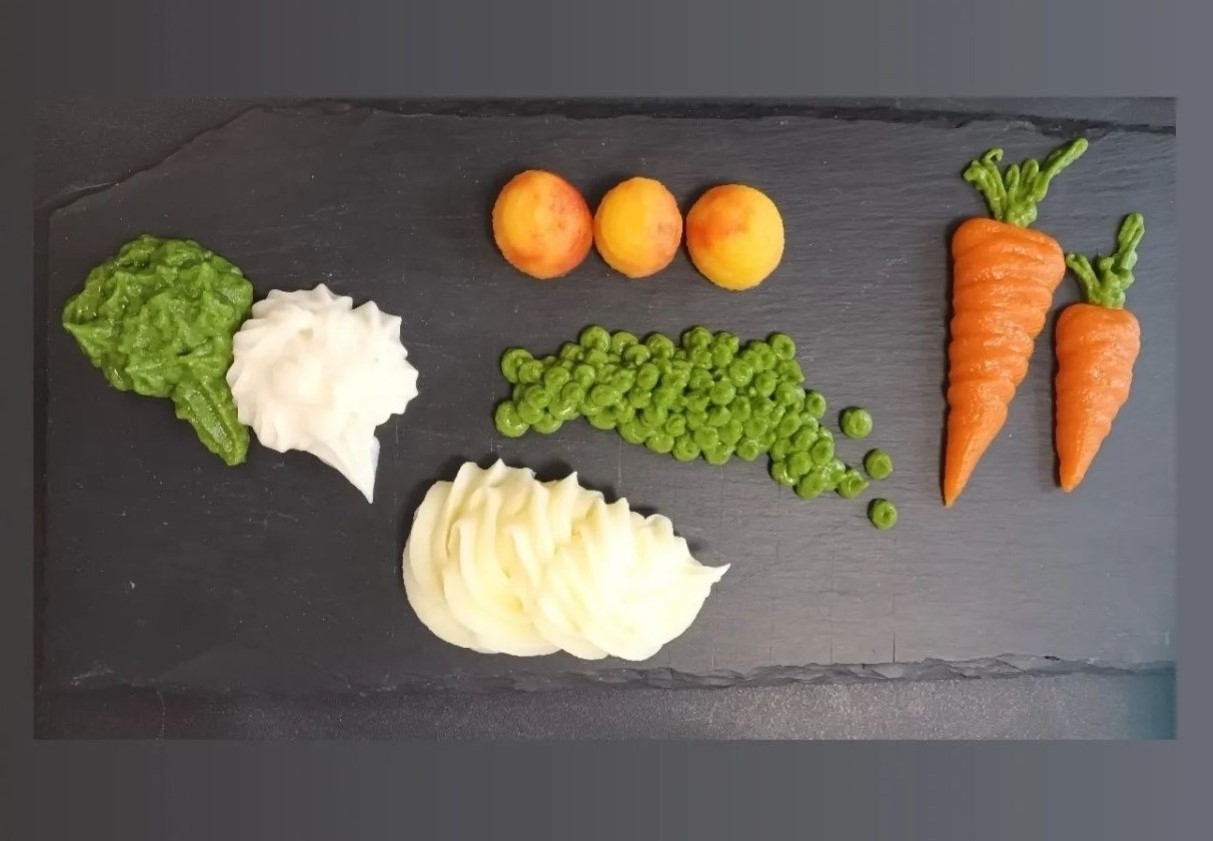Dysphagia and level 4 pureed diets – “Now what?”
You have been recommended a level 4 pureed diet by your speech-language pathologist (S-LP) and may be thinking, “Now what? What is that?”. Level 4 pureed diets are typically recommended by S-LPs to individuals with dysphagia if certain difficulties are noted. Some of these difficulties may include (but are not limited to) a decreased control of tongue movement or perhaps an inability to bite or chew food [1]. It can be overwhelming to navigate where to begin with a diet recommendation like this once you get home, but thankfully chefs have mastered the skill of blending and pureeing foods so you don’t have to figure it out alone!
What is a level 4 pureed diet?
The International Dysphagia Diet Standardization Initiative (IDDSI), an internationally recognized standard for texture-modified diets, describes level 4 pureed food as having a smooth consistency with no lumps or liquid separation [1]. It is often compared to the consistency of mashed potatoes or hummus. We had the opportunity to speak with Niamh Codon, founder of Dining with Dignity and better known as the Dysphagia Chef. She shared her wealth of knowledge and her years of experience coaching individuals and families living with dysphagia on preparing and serving dysphagia foods that are IDDSI safe. We summarized that conversation with her below and hope you find some helpful tips as you get started.
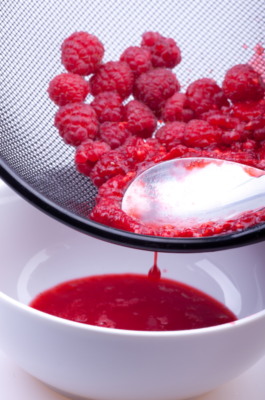
Start with the right kitchen tools
To achieve the consistency of level 4 pureed foods, we’ll need to begin with the right kitchen tools to get the job done. While a blender may pop into your mind first when it comes to making purees, a fine mesh sieve is equally essential and one of the most inexpensive and useful tools to have in your kitchen, according to Niamh. When used together, a blender and fine mesh sieve will make the pureeing process much easier and smoother – literally!
If you were recommended this diet, you will be using a blender often; be sure to look for a powerful one that pushes the food into a vortex. This will ensure all the food is blended well. Diane Wolff, author of Essential Puree: The A to Z Guidebook, shares more details on basic kitchen tools for a puree kitchen here. Next, Niamh recommends using the fine mesh sieve to make sure the puree is free of any lumps missed by the blender, or any other bits like seeds or fresh herbs that may not be safe for you to eat. Even after blending and sieving, the puree may not be ready to eat just yet. It is important to always check the consistency of the puree so that you know it is safe to eat. You can do this by using tests outlined by IDDSI, the international initiative we introduced to you earlier.
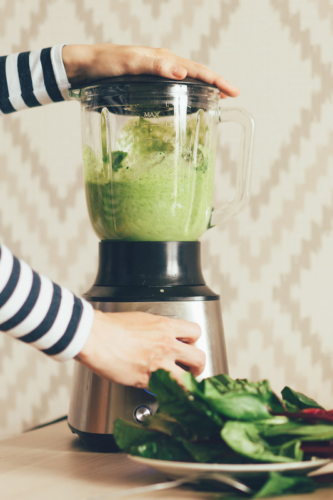
Testing your level 4 pureed food
One of the great resources offered by IDDSI is a set of tests for different food and liquid consistencies. These tests can be completed right in your home and help check whether the puree is ready for you to safely eat. Not all purees are automatically safe to eat because they can vary in thickness and texture depending on how foods are prepared. For level 4 pureed foods, the food must pass two important tests:
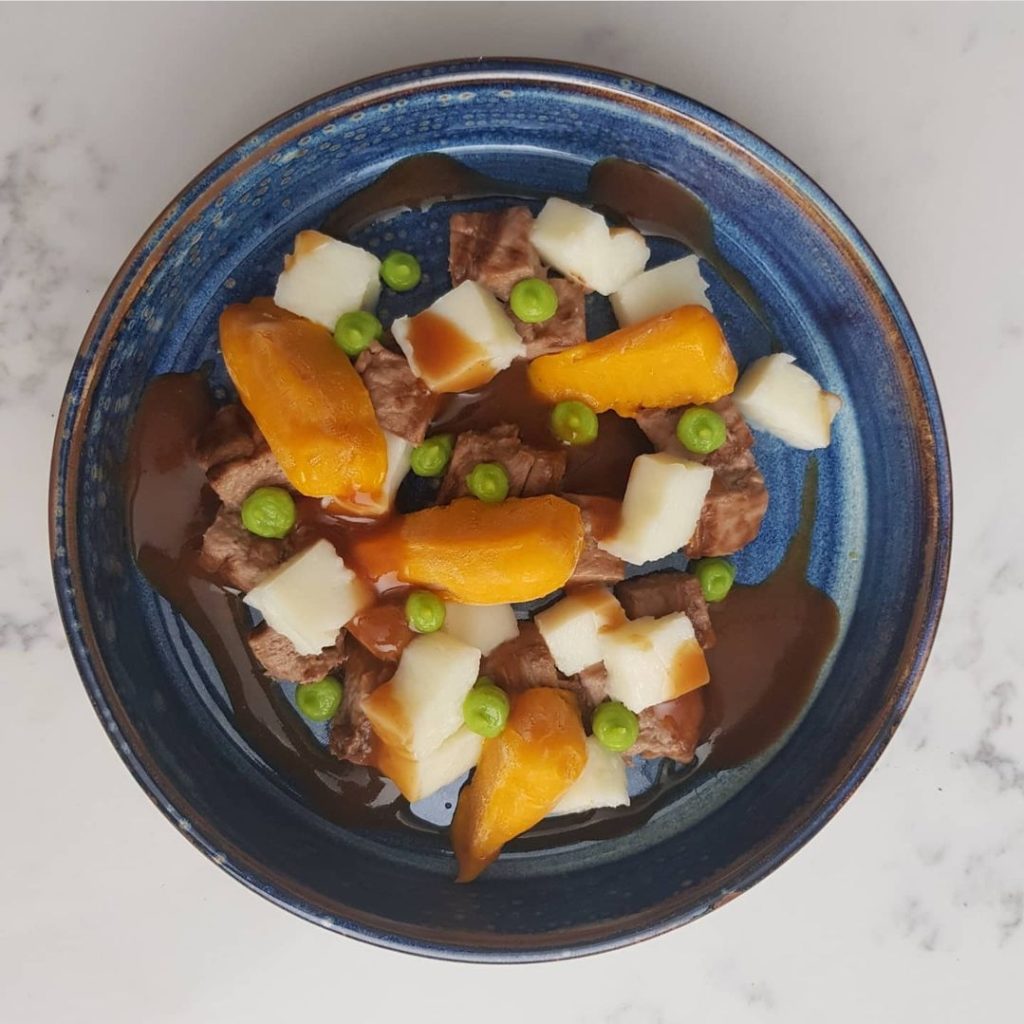
- The IDDSI Spoon Tilt Test
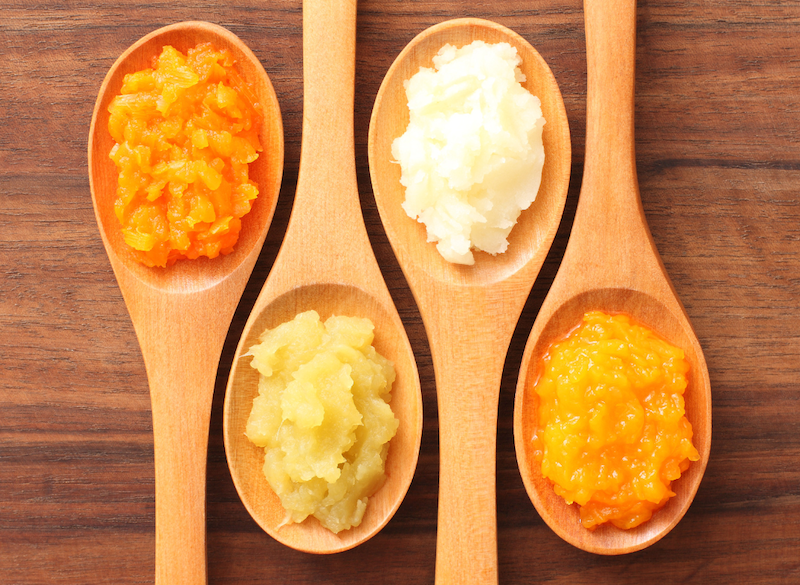
The Spoon Tilt Test is used to check the stickiness of foods and how they can hold together [2]. Take, for example, a spoon of mashed potatoes and a spoon of smooth peanut butter- both are technically purees but the degree to which it holds together is very different. Mashed potatoes will hold its shape and slide off the spoon in one piece without much residue when the spoon is tilted.
Compared to a spoonful of peanut butter that will slowly slide off and leave a film on the spoon due to its stickiness. This stickiness is important to watch for as it can cause the puree to stick to various surfaces in the mouth and throat. This may put you at risk of choking (airway blockage) or aspirating (when food or liquid enters the lungs) [1]. IDDSI outlines the following characteristics to watch for [1]:
- The puree should hold its shape on the spoon and fall off easily if the spoon is tilted or lightly flicked.
- The puree should not be firm or sticky.
- See a video of the IDDSI Level 4 Spoon Tilt Test here.
- The IDDSI Fork Drip Test
The Fork Drip Test is used to check the thickness of foods and how they can hold together [2]. Picture a bowl of pureed soup. Your pureed soup may look thick, but you may discover that it’s not thick enough after checking it with the Fork Drip Test. If your pureed soup is not thick enough then it may not be safe for you to eat just yet according to your S-LP. This pureed soup example is an important reminder to use the Fork Drip Test instead of judging your purees based on just looks alone. IDDSI outlines the following characteristics to watch for [1]:
- The puree should sit in a mound above the fork.
- A small amount of the puree may flow through the fork tines and form a tail below the fork. See an example image here.
- The puree should not drip continuously through the fork tines.
Troubleshooting tips for level 4 purees
After testing your puree, you may find that it did not pass one or both of the IDDSI tests outlined above. That’s okay – you can still have your meal with a few minor changes. Here are some troubleshooting tips on how to fix your puree consistency to meet the IDDSI safety guidelines [3]:
- Your puree is too runny. Try adding commercial thickeners or thickeners you can find in your pantry such as pureed beans or mashed potato flakes.
- Your puree is too thick or dry. Try adding flavourful liquids such as broth or cream.
- Your puree is too sticky. Try adding fats such as butter or sour cream.
Repeat the Spoon Tilt Test and Fork Drip Test to recheck the consistency of your puree. Once your puree passes both tests, you’re ready to enjoy it!
You’re not alone!
You may be thinking to yourself, “There is so much to learn and changes to make!”. Niamh hears this all the time when helping individuals and families navigate this new diet. For some inspiration, she shared the picture to the right of a pureed meal. This pureed meal was made by a family member after taking a virtual workshop with Niamh. You can see the care and effort they put into this dish. Trust that with time and practice, preparing tasty and appetizing pureed meals will get easier!
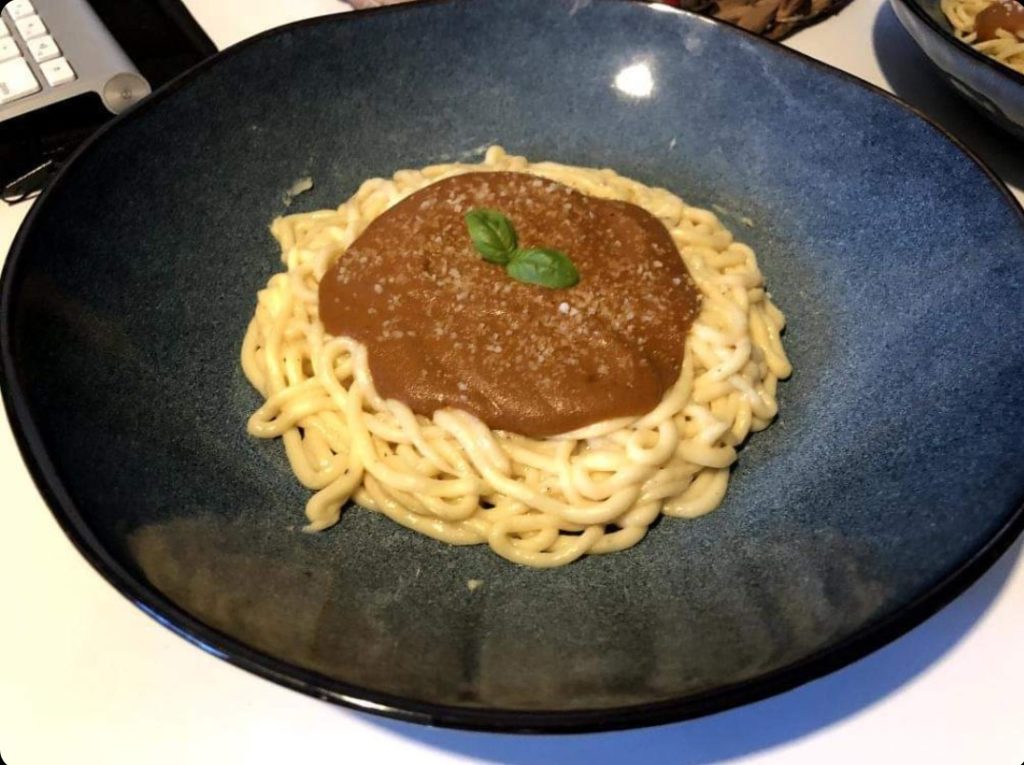
There are many resources, like the ones linked below as well as communities of people on social media eager to help you get started. Remember, you don’t have to figure out level 4 pureed meals on your own or become an expert overnight! Take it slow and be open to asking for help. You can always start with learning some simple meals first or have someone in the kitchen with you for support. Find what works best for you and watch your level 4 puree recipe repertoire and preparation skills grow with time!
Have a different tip or trick to share about level 4 puree diets? Send us a message at: info@trueanglemedical.ca
Disclaimer: The information here is meant to support people with dysphagia and their friends and families. It is not, in any way, meant to replace treatment or consultation with medical professionals. For more information about your individual needs, speak to the medical professionals on your care team.
Photos were provided by and are courtesy of Niamh Condon – @dysphagiachef and Canva.
Dysphagia-Friendly Recipes and Resources
- Beyond the Blender: Cookbook full of recipes from lunch to dessert
- Dysphagia Foods and Recipes: Facebook group community full of great tips
- Nutricia UKIR Digital Team: Various level 4 pureed meal preparation videos
- Oak House Kitchen: Blog posts on tips and recipes for level 4 pureed meat
- Real Meals Modified: Level 4 puree recipes like a roasted sweet potato burrito bowl
- Sparking Joy with Food: How to make pureed meals flavourful and appetizing
- Vancouver Coastal Health: Patient guide to dysphagia pureed diet
References
- Level 4 pureed foods for adults. (2019, January 30). International Dysphagia Diet Standardization Initiative. Retrieved March 22, 2022, from https://iddsi.org/IDDSI/media/images/ConsumerHandoutsAdult/4_Pureed_Adults_consumer_handout_30Jan2019.pdf
- IDDSI testing methods. (2019). International Dysphagia Diet Standardization Initiative. Retrieved March 24, 2022, from https://www.iddsi.org/framework/food-testing-methods/
- Dahl, W. (2021, February). Pureed foods for swallowing problems. University of Florida: Food Science and Human Nutrition Department. Retrieved April 6, 2022, from https://edis.ifas.ufl.edu/pdf/FS/FS168/FS168-Dlzuay3cn1.pdf

